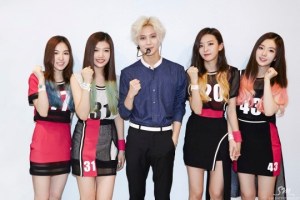What has studying the Eat Your Kimchi community taught me throughout my study? How does Eat Your Kimchi fit into the South Korean context? How does my experience of the EYK community and South Korea fit into the international fandom of EYK?
I have learnt to see Eat Your Kimchi as a window. A portal. A way to access something new and exciting (South Korean culture, being part of an international fan community) while still being comforted and accommodated by something familiar (English language, YouTube as a medium of expression and community). The key to stepping into the rabbit hole has been using the autoethnographic method to serve as a gentle helping hand in forging a connection with my subject, bridging the distinction between personal, immersive experience and scholarly study (Doty 2010). It is the human aspect that has been very fascinating for me, the fandom which supports EYK/Simon and Martina like a boat, often physically and metaphorically ferrying EYK to new shores (for example, they have now twice travelled to Scandinavia to meet with fans and attend festivals/conferences, and have travelled to Australia for SBS and to see their Aussie fans).
Each post has been an extra push into participation in the EYK community. 한류 (korean wave) gave me perspective on how I saw EYK when I first discovered them; as a white South Korean couple, a strange revelation, which has shown me that cultural identity is not necessarily something tied to nationality or ethnicity, but from my perspective, something that is generated by passion for, assimilation within, and recognition of a distinct cultural identity. 유명인사 (celebrity) brought me to terms with my identity as an actual ‘fan’ of EYK rather than a viewer/consumer of EYK content, and further expanded on how Simon and Martina are a conduit into South Korean culture. 외국의 (foreign) brought me face to face with my cultural assumptions surrounding South Korea and prompted a revelation: EYK have become part of the ‘soft power diplomacy’ used by South Korea to break into new media markets. 공동체 (community) allowed me to come to terms with how valuable the EYK fandom has been to EYK, yet also challenged me to tackle with the question: how DOES an autoethnographer effectively represent their research? I needed an way to represent this relationship that was immersive yet gave perspective to the author. 장애물 (barrier) demonstrated my engagement with the autoethnographic technique of reflexive ethnography; attempting to interact with South Korean culture and entertainment, while also reflecting on barriers which caused the process to stutter and start, such as language barriers and the media via which we consume a culture. 제공 (contribution) brought the EYK community back into focus, and my research revealed to me the medium for my Digital Artefact, while also allowing me to investigate what makes digital fandoms different: the amplification of participatory culture and the complimentary nature of a producer’s relationship with their supporters. 참가 (participation) revealed to me the importance of place, communication and culture in the exchange between fandom and the subject of fandom, and how perspective and the audience’s position in relation to the subject augments the exchange of meaning involved. My research also zoomed in upon the interaction of fans internationally, brought together by the flexible space that is the digital, and came to terms with how my Digital Artefact could fit into and accentuate this symbiosis.
This is what my autoethnographic experience of Eat Your Kimchi and South Korea has taught me. The digital has brought Asia, especially South Korea, closer into focus for those living in cultural isolation from their culture. Eat Your Kimchi not only provides the diffusion of South Korean culture into a simpler, more easily consumed dimension for people all over the world via language, medium, inclusivity and physical and digital spaces, but has also created a valuable exchange between people of differing cultural and social perspectives with a passion in common: South Korea.
External reference:
Doty, R. L. 2010, ‘Autoethnography- making human connections’, Review of International Studies, Vol. 36, No. 4, pp. 1047-1050






